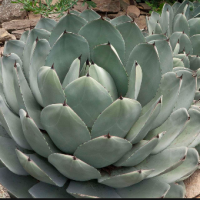March 2019 Plant Profile: Olea europaea ‘Frantoio’

If you’ve been dreaming of escaping our cold, snowy Pacific Northwest, to a sunny and warm Mediterranean climate, dream no more! The ‘Frantoio’ is one of the most successful olive trees for the Pacific Northwest. Touted as the hardiest olive for our climate, 10° F or below and apparently gains cold hardiness the older it gets. Beautiful silvery foliage is attractive year-round.
Read moreIt’s Snow Big Deal!

Here’s a sampling of some of the Arboretum trees that sustained some damage from the recent snow. Luckily most of the cuttings were taking from plants that will survive!
Read more50 Year Snow Storm Hits Arboretum Plant Collections Hard!

The record cold temperatures and snow that fell in Washington Park Arboretum between Feb 3 and Feb 11 will be one for the record books when it comes to accounting for all the plant collections damage and total losses.
Read moreEarly Flowering Rhododendrons at the Washington Park Arboretum

1) Rhododendron arboretum hybrid
This Rhododendron, located in the Joseph A. Witt Winter Garden, dutifully produces its blooms of bright rose in the dark of winter.
The UW Botanic Gardens’ database has records of it blooming in December, January, and February.
2) Rhododendron floribundum
Native to the southern central area of China, and was first described by Adrien René Franchet.
Franchet was a French botanist who was noted for his extensive work describing the flora of China and Japan, based on the collections made by French Catholic missionaries in China – Armand David, Pierre Jean Marie Delavay, Paul Guillaume Farges, Jean-André Soulié, and others.
Selected Cuttings from the Witt Winter Garden at the Washington Park Arboretum

1) Chimonanthus praecox Wintersweet
The light yellow flowers are debatably the sweetest of the Witt Winter Garden.
Wintersweet is highly cultivated in China where the flowers are used in teas and herbal remedies despite the fact that the seeds are poisonous.
Also in China, the flower petals are used in potpourri and to scent linen.
2) Cornus sanguinea ‘Midwinter Fire’ Midwinter Fire Dogwood
Cornus sanguinea is native to Europe.
Read moreLearning About Outdoor Education in Norway

Among the many programs at UW Botanic Gardens, the Fiddleheads Forest School stands out as a unique program for the youngest learners. With the Washington Park Arboretum as its classroom, the outdoor preschool program offers students the opportunity to explore the natural world, learn from experimenting, and practice stewardship of the environment.
Fiddleheads Director and Co-Founder Sarah Heller spent a week in Trondheim, Norway in September 2018.
January 2019 Plant Profile: Grevillea

Your neighborhood hummingbirds will appreciate the nectar producing flowers on these winter blooming shrubs.
Read moreWinter Interest at the Washington Park Arboretum

1) Camellia sasanqua Sasanqua Camellia
This glossy evergreen shrub with attractive flowers is native to China and Japan.
There are many cultivated varieties of this species with the first ones being recorded from Japan around 1700. Over 15 varieties reside in our Camellia Collections.
The plant was valuable to early Japan as the leaves were used for tea and the seeds used to make tea seed oil.
Fall Highlights of the Arboretum Creek

1) Taxodium distichum Bald Cypress
This deciduous conifer in the family, Cupressaceae grows in marshy and seasonally inundated soils.
Bald Cypress are famous for their “knees”, woody conical projections that emerge from the soil.
The purpose of these knees is still not entirely known. Some speculate they help oxygenate the roots or provide stability in the often loose swampy soils this species prefers.
